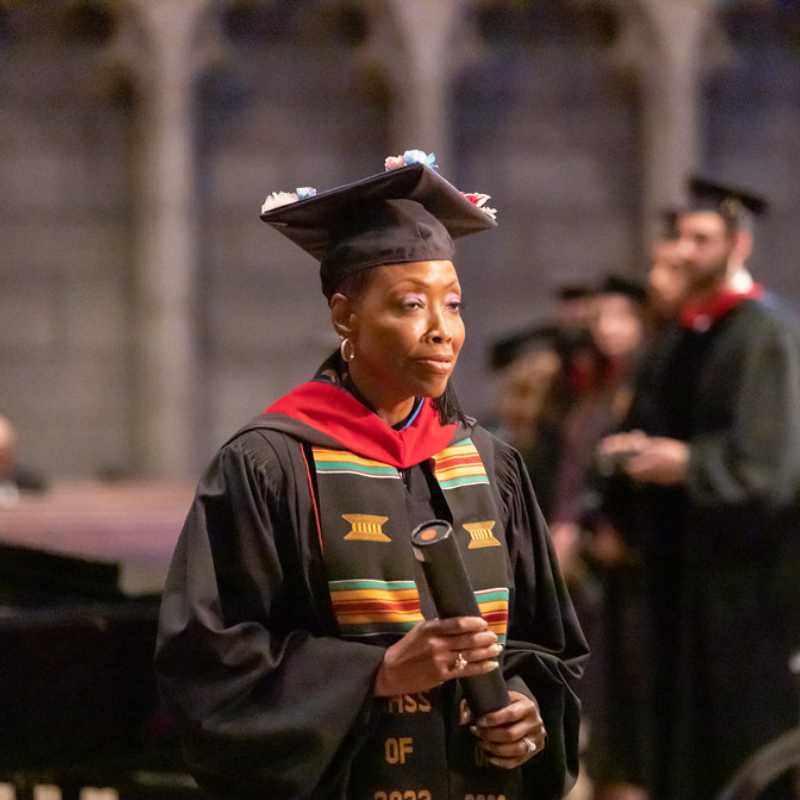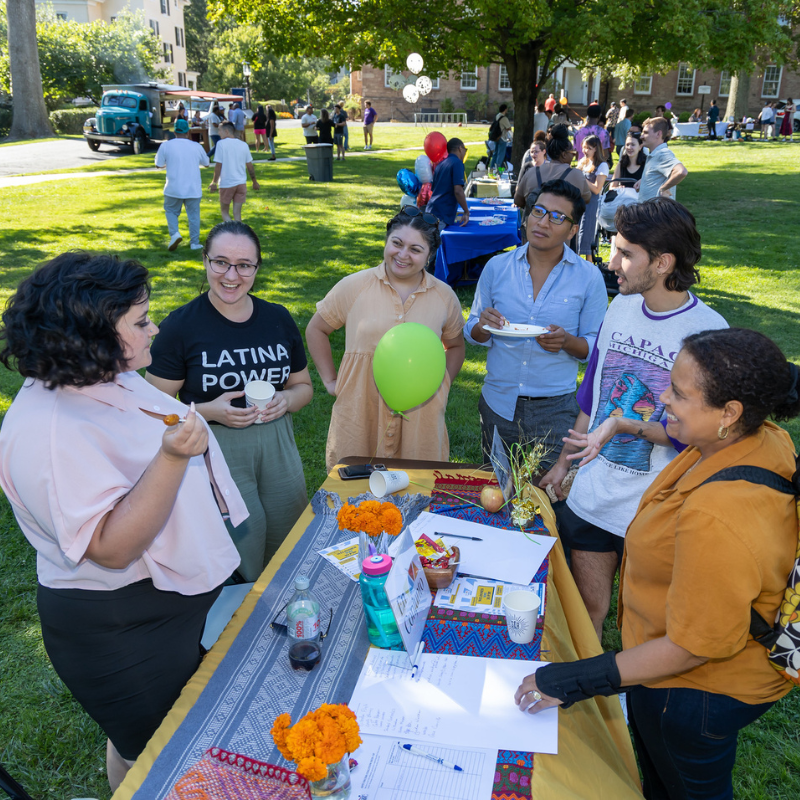Psalms: The Gymnasium for the Soul
December 27, 2018 | Continuing Education, Faculty, Public, The Thread

Americans are fond of saying that we are going to ‘hit the gym.’ When I say that I’m ‘hitting the gym,’ the implication is that I’m lifting weights, running on the treadmill, swimming laps. I’m in the serious business of building muscles, stretching sinews, strengthening my ‘inner core.’ Some of us go the gym and actually do these things. But, truth be told, many of us get the gym confused with the spa. We may put on the sweat suit, but our routine hardly warrants this. A short jog, a dip in the pool, some unwinding in the hot tub and then a rigorous…massage.
The fourth century bishop of Milan, St. Ambrose, referred to the book of Psalms as a “gymnasium for the soul.” The implication is that we would do well to go to the Psalter for a workout, to stretch our sinews of prayer, to strengthen our heart, to tap into a spiritual ‘inner core.’ Yet, we manage to turn the Psalter into a spa. Many go there only to find words of comfort and inspiration for praise. Often times, this is all that is modeled in the church’s worship. The Psalms, however, have so much more to offer. The Psalms show us how to pray, to communicate, to have fellowship with God and with one another.
Many Christians are wary of being told how to pray. This is particularly true in the Reformed tradition to which I belong. We do not subscribe to a ‘prayer book.’ Our prayers are free to express what is in our heart and true to what we feel. While there is much to be commended about this commitment to heart-felt, honest, and expressive prayer, in my observation there are two problems with this approach.
The first problem rests in the assumption that our churches are truly open to expressive prayers, prayers that are honest and heartfelt. In practice, while there is ample room for heartfelt expressions that are positive and cheerful, honest expression of hurt, anger, and doubt are more often than not kept out of public worship. Many assume that these ‘disturbing’ feelings of the heart are better expressed and explored in one-on-one pastoral care settings. In other words, those traditions most committed to ‘expressive prayer’ in worship tend to disregard the full spectrum of expressivity that is modeled in the psalms.
The second problem is the very notion that prayer, and by extension worship, which expresses ‘what I feel’ is in itself of the highest order—that somehow only prayers and songs that naturally pour forth from our hearts are desirable in worship. Even if we could assume that our liturgies truly allowed for a full spectrum of honest expression, our worship may remain impoverished. The scope of our worship would then be limited by the condition of our hearts.
The disciples asked Jesus to teach them to pray. Now, Jesus could have answered, “just freely express yourself to your heavenly Father. Tell him what is on your heart.” And let’s be clear, Jesus, in his own prayers—think of the garden of Gethsemane—demonstrates honest prayer that springs from deep in his soul. And, in his ministry, Jesus heard the cries and prayers that sprung forth from the hearts of those in need of forgiveness, healing, and acceptance. But when asked by his followers to teach them to pray, he said, “Like this …” Jesus, it seems, allowed that prayer and worship might not only be expressive, but might also be formative. Worship and prayer can and should teach us, sculpt us, stretch us, and form us into the body of Christ.
Recently my general practitioner sent me to a health center for some physical therapy. I was having problems with my knees. Some days I experienced shooting pains. Other days my knees might go numb. When I learned that the prescribed treatment was to be muscle stretching and building, I protested that I jogged and exercised regularly. My muscles, surely, were not the problem. Indeed, the muscles that I was exercising regularly were not the problem. However, I learned that there were some significant sinews that were being left out of my regular routine. I was introduced to ‘stretch bands’ that I had to wind around my ankles and knees. My coach demonstrated what seemed to me to be inane, repetitive lateral stretches. But when I attempted them—whoa—what pain! My physical therapist was awakening muscles I did not know that I had, creating new pain which, to me, seemed unassociated with my presenting pain. After therapy sessions I found myself limping through the parking lot to my car. But, as I persisted with strengthening some muscles, stretching others, in time the pain and numbness in my knees disappeared. I continue, three days per week, to strap on those blasted elastic stretch bands for a short workout. Though the routine is not something that I relish, it has ceased to be painful. I am grateful for the restoration that I’ve experienced.
The application of St. Ambrose’s metaphor of the Psalter as a gymnasium to the church’s life of prayer is not difficult to imagine. The tendency in our worshiping communities is to gravitate to those routines that make us feel good. In fact, these exercises in and of themselves are good, and they give us a sense that we are keeping fit. But then things break down and we learn that there are prayer muscles that we have neglected to our own detriment. We may be cycling through our psalms and prayers of praise and comfort, but when faced with the need to cry “I’m sorry,” or “have mercy,” or “where are you, God?!,” or “that’s not fair!,” our exercises of communal prayer are found wanting. The Psalter offers to the church a full gym experience. But, when we turn the gymnasium into a spa, our relationship with God and with one another suffers.
Here is where the art of pastoral ministry comes into play. Ministers, musicians, pastors and planners of worship have the opportunity to form communities through worship, to help them discover and exercise all the sinews of prayer. Just as my coach watched me as I began my physical therapy—making sure that I was stretching in the correct position, assigning appropriate goals for repeating lateral stretches, adjusting the weights on the machine—so, too, pastors need to guide their congregations into the regimen of the Psalter. Some of this might be done in pastoral care settings, but much of this happens in worship, within the gathered community. There is an art to this. Pastors need to be good coaches in prayer. When stretching new muscles, there is a potential for doing harm. We enter the gymnasium of the Psalter with care and caution, and, perhaps, some trepidation. The regimen of the Psalter is neither safe nor easy. But to ignore the development of a full spectrum of prayer will most certainly lead to disease. Ignorance is not a viable option.

Martin Tel is the C. F. Seabrook Director of Music at Princeton Theological Seminary. At the Seminary, Tel conducts the Seminary choirs, teaches courses in church music, and administers the music for the daily seminary worship services. He is the senior editor of
Psalms for All Seasons: A Complete Psalter for Worship(Faith Alive/Baker, 2012). Tel also served on the editorial committees producing a new hymnal for the Christian Reformed Church and Reformed Church in America denominations,
Lift Up Your Hearts: Psalms, Hymns and Spiritual Songs(Faith Alive, 2013), and the bilingual Spanish/English hymnal,
Santo, Santo, Santo: Cantos para el pueblo de Dios / Holy, Holy, Holy: Songs for the People of God(GIA, 2019).





